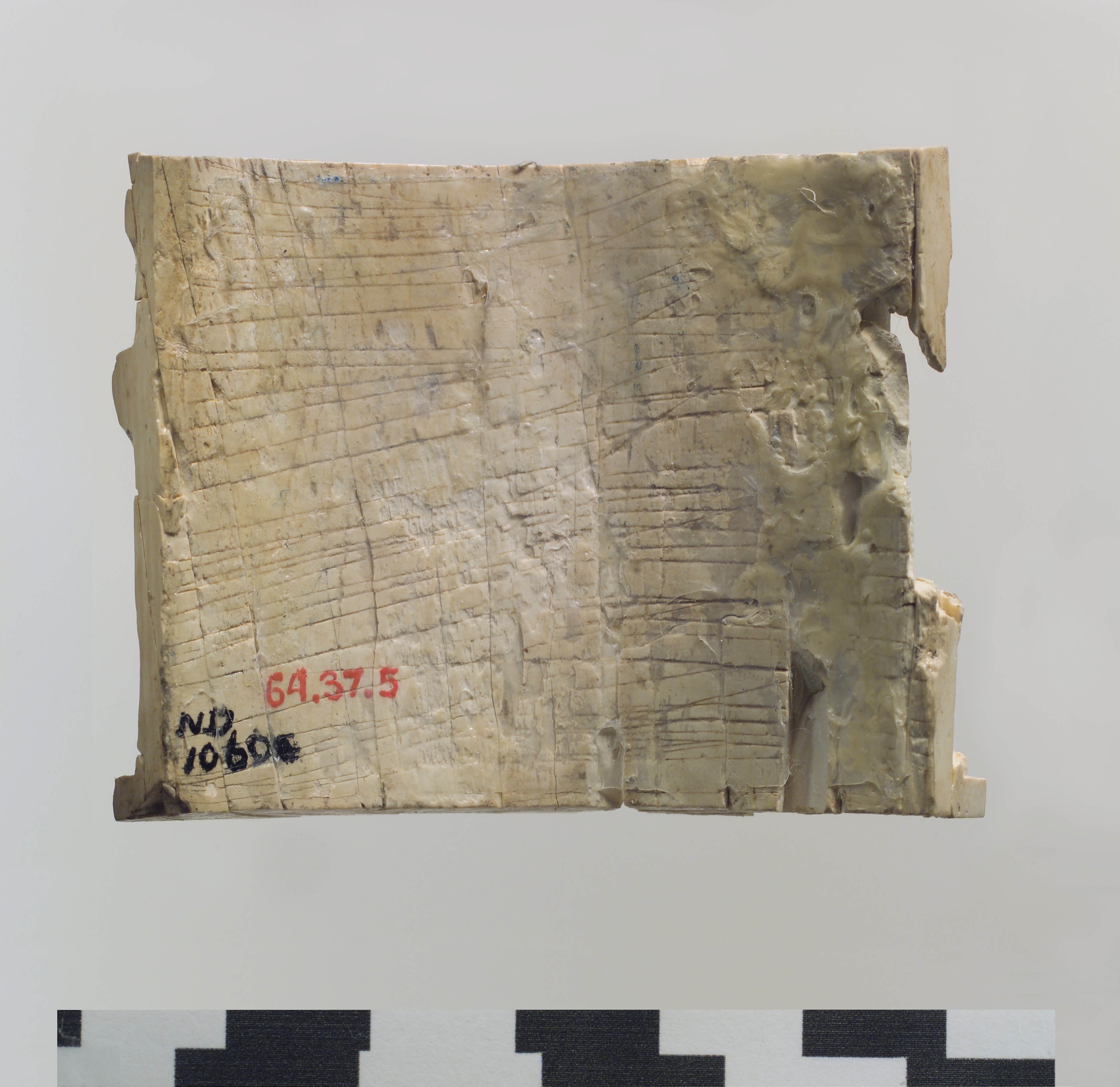Furniture or cosmetic box plaque carved in relief with a striding bull
Not on view
This slightly curved plaque is carved in relief with a striding bull set within thin frames at the upper and lower edges and bordered by a stylized plant on the right. It was found in a storeroom at Fort Shalmaneser, a royal building at Nimrud that was probably used to store tribute and booty collected by the Assyrians while on military campaign. Originally, this piece was probably set in a continuous frieze and attached to other ivory plaques with striding animals. The complete, circular element would have decorated the leg of a table or bed, or served as decoration for a small cosmetic box. The bull’s rear and tail do not survive. Its heavy body fills the empty space of the plaque, a composition characteristic of North Syrian ivories. Two of its legs are carved in the round. Its deeply drilled eye would have been inlaid with colored glass or a semiprecious stone, and the three small holes drilled into the hooves may have also been inlaid.
Built by the Assyrian king Ashurnasirpal II, the palaces and storerooms of Nimrud housed thousands of pieces of carved ivory. Most of the ivories served as furniture inlays or small precious objects such as boxes. While some of them were carved in the same style as the large Assyrian reliefs lining the walls of the Northwest Palace, the majority of the ivories display images and styles related to the arts of North Syria and the Phoenician city-states. Phoenician style ivories are distinguished by their use of imagery related to Egyptian art, such as sphinxes and figures wearing pharaonic crowns, and the use of elaborate carving techniques such as openwork and colored glass inlay. North Syrian style ivories tend to depict stockier figures in more dynamic compositions, carved as solid plaques with fewer added decorative elements. However, some pieces do not fit easily into any of these three styles. Most of the ivories were probably collected by the Assyrian kings as tribute from vassal states, and as booty from conquered enemies, while some may have been manufactured in workshops at Nimrud. The ivory tusks that provided the raw material for these objects were almost certainly from African elephants, imported from lands south of Egypt, although elephants did inhabit several river valleys in Syria until they were hunted to extinction by the end of the eighth century B.C.
Due to rights restrictions, this image cannot be enlarged, viewed at full screen, or downloaded.
This artwork is meant to be viewed from right to left. Scroll left to view more.



